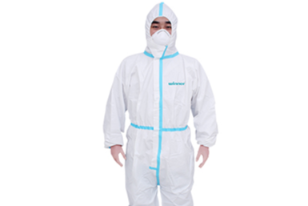19/05/2023
ByWinner Medical
 11358
11358
 Event
Event
It's been a few years since protective gowns have become the standard of medical clothing and a mandatory requirement for anyone entering a hospital. In this article, learn why these protective gowns protect against airborne pathogens!

What is a protective gown?
A protective gown is a type of medical clothing worn to protect the wearer from contamination. They are made of various materials, including cotton and polyester, and are available in various styles and colors. Protective gowns are most commonly used in hospitals and other healthcare settings, but they can also be used in other settings, such as laboratories or nursing homes.
Protective gowns are often seen as the new standard of medical clothing. They are versatile and can be worn in various settings, making them ideal for use in hospitals and other healthcare settings. They are also comfortable to wear and suitable for long-term wear. In addition, protective gowns are resistant to bacteria and other contaminants, making them an effective option for protecting patients from infection.
Purpose of a protective gown
There are a few reasons why protective gowns are becoming the new standard in medical clothing. First, they help to protect health care professionals from potentially harmful substances. This includes both environmental and patient contamination. Additionally, they can help to prevent injuries to the skin and body.
Why should nurses wear Winner Medical protective gowns?
Nurses play a critical role in keeping patients safe. To ensure patient safety, nurses must wear protective clothing while they are working. Protective gowns are the new standard of medical clothing because they offer protection from potential infections and hazards.
A gown protects the nurse from potentially harmful germs and debris on the patient and helps prevent skin-to-skin contact.
Nurses who work with critically ill patients or have other health risks should always wear a gown when caring for them. By doing so, nurses can help to ensure that their patients receive the best possible care.